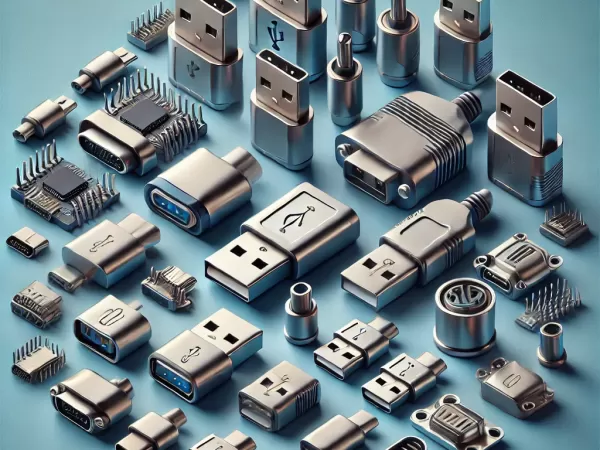Learn about different types of USB connectors and choose the solution that's right for you

In today's digital world, USB connectors are an essential tool in almost everyone's daily life. Choosing the right USB connector can make your device perform better. Let us take you through these different types of USB connectors and help you find the most suitable solution!
1. USB-A: The classic standard
USB-A is the traditional USB interface we are most familiar with, widely used in computers, chargers, and external devices. Although the frequency of use of USB-A has decreased over time, it is still the first choice for many classic devices.
- Application scenarios : keyboard, mouse, external hard disk, printer, etc.
- Advantages : stable compatibility and wide applicability.
2. USB-B: The veteran in device connection
USB-B is commonly used for larger devices such as printers, scanners, etc. Although not as popular as USB-A, it still plays an important role in some specific devices.
- Application scenarios : printers, scanners, and audio equipment.
- Advantages : Highly specialized and suitable for stable device connections.
3. Micro-USB: Once a standard feature of mobile devices
Before USB-C came along, Micro-USB was the primary port type for many smartphones and tablets. Although it is gradually being phased out, it still has a place in some older devices.
- Application scenarios : early smartphones, tablet computers, Bluetooth headsets, etc.
- Advantages : Small size, space saving.
4. Mini-USB: for portable devices
Mini-USB is slightly larger than Micro-USB and is commonly used in early digital cameras and some mobile devices. As technology develops, Mini-USB is gradually replaced by newer interfaces, but it can still be seen in older devices.
- Application scenarios : portable hard drives, old cameras, mobile devices.
- Advantages : Compact design, suitable for portable devices.
5. USB-C: The connection standard of the future
USB-C is the most advanced and powerful USB connector currently available. Its double-sided insertion design and support for high-speed data transmission and high-power charging make it the standard choice for the future. It is widely used in modern smartphones, laptops, and other high-end electronic devices.
- Application scenarios : smart phones, laptops, tablets, game consoles, etc.
- Advantages : high-speed transmission, double-sided insertion, strong power supply capability, and wide application range.
So how do you choose the right USB connector for you?
When you are choosing a USB connector, consider the following:
- Device Type : Determine what type of USB port your device requires. USB-C is suitable for modern devices, while USB-A and USB-B may be more common on older devices.
- Transfer speed and power : If you need fast charging or large file transfer , USB-C is the best choice, which supports high power transmission and high-speed data exchange.
- Compatibility : Make sure the selected USB connector is compatible with existing devices to avoid inconvenience caused by interface mismatch.
Choose the USB solution that's right for you
Whether at home or in the workplace, finding the right USB connector is key to improving efficiency and performance. The variety of USB connector types ensures that you can find the right solution for different devices to meet different transmission needs.
Learn about various USB connectors and choose the solution that suits you, making your device connections smoother and your work and entertainment more efficient.